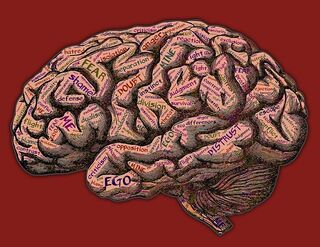Anger
This 5-Step Practice Will Improve Your Emotional Well-Being
Develop the skills to better regulate your emotions and tolerate distress.
Posted June 24, 2021 Reviewed by Lybi Ma
Key points
- This mindfulness practice can help you handle uncomfortable, distressing emotions more skillfully.
- This practice incorporates and integrates elements of emotional regulation, distress tolerance, self-compassion, and self-acceptance.

The best way over is through. ~Robert Frost
Many people struggle with their emotions, particularly those that are difficult, uncomfortable, and painful. Such emotions include, but are not limited to: anxiety, fear, sadness, disappointment, grief or loss, frustration, anger, resentment, guilt, and shame. Most people deal with these challenging emotions via one of two extremes: by avoiding acknowledging and feeling them as much as possible because they are just too uncomfortable, or by becoming overwhelmed by them, effectively drowning in and acting out on them.
Importantly, there is a middle path that expands the capacity to tolerate distress, regulate emotions, and can improve overall mental-emotional health.
N.O.A.H.S. is a mindfulness practice that I developed to handle uncomfortable, distressing emotions more skillfully. This practice works through a process of consciously acknowledging our difficult, painful feelings, being present with them, and moving toward making peace with them.
It follows the following sequence: Notice and Name the feeling(s) > Observe it > Allow it > Hold it > put Space around it. This practice can be used with any difficult or painful emotional state and involves several levels of awareness and action.
1) Notice and Name
The first is to notice, to become consciously aware, that you are experiencing an uncomfortable emotion. Although initially, you may not know specifically what the emotion is, it is important to definitively notice and acknowledge that you are experiencing an emotion.
Operating below the level of conscious awareness, the autonomic nervous system interfaces with the world through the process of neuroception—detection without awareness—listening inside the body, outside in the environment, and in the interactions between people. Noticing an emotion makes implicit experience explicit.
The next step is actually an extension of noticing the feeling, and that is to identify the particular emotion, to name it. A fundamental part of discerning specific emotions from a mass of intense or vague feelings is to put them into words and give them a name. Say to yourself, I feel anxious, or I feel angry, or I feel sad, depressed, guilty, lonely, afraid. Sometimes we feel more than one emotion at a time: I feel frustrated and disappointed.
If you struggle to identify and name your emotions, start by making the connection between different emotions and where you feel them in your body. Learning how you register different emotions in your body in terms of their location (where you feel them) and sensation (what they feel like) will help you to identify them more quickly and accurately. For example, anger may be felt as tightness in your shoulders, sadness as aching in your chest, fear as a knot in your stomach, and joy as warmth in your heart.
Research shows that just naming a difficult emotion can reduce its hold on us and improve emotional intelligence. A study at UCLA found that subjects who put feelings into words make sadness, anger, and pain less intense. In terms of brain activation, when we experience fear and anger, the survival-focused amygdala shows increased activity. By naming these emotions, activity shifts from the amygdala to the prefrontal cortex, the part of the brain that inhibits irrationality and helps us make better and healthier decisions.
2) Observe
Observe the emotion. Greet it along the lines of, this is anxiety, sadness, fear, anger, and so forth. Gently rest your awareness on it. View it with openhearted interest.
3) Allow
Allow the emotion (whatever it may be) to simply be. Let yourself feel it without needing to fight against it, run from it, or cling to it. Make space for it. This act of allowing takes us out of reactivity and into a more accepting and open mind-state.
4) Hold
Hold the emotion. Breathe into it, be present with it, coexist with it, and begin to make peace with it. In a manner of speaking, have tea with it.
5) Space
Release the emotion by putting space around it. Visualize it floating off or put some sort of perimeter or border around it.
And notice what happens.
This practice helps deactivate the sympathetic division of the autonomic nervous system and turns off the body’s stress response while simultaneously engaging the parasympathetic division and triggering the relaxation response. The parasympathetic division handles rest, relaxation, recharge, and conservation of energy. Upon its activation, breathing slows and deepens, muscles soften, metabolism and pulse rate slow, and blood pressure decreases.
This practice encompasses elements of emotional regulation, distress tolerance, self-compassion, and self-acceptance. In facilitating a more detached witness perspective with our uncomfortable emotions, we can be present with them and yet gain some separation from them, providing the space to experience them differently. It changes our relationship with them, and in changing the structure of the experience, the experience itself changes. As a result, whenever I use this practice, the emotions with which I’m challenged almost always become a little smaller and begin to dissipate.
The entire progression of this practice can take as long as you require, but it need not take more than a minute or two. Whether pleasurable, painful, or neutral, your emotions are an intrinsic part of who you are. You can’t disavow your distressing emotions without disavowing part of yourself. Self-acceptance is a process that depends on finding ways to accept and make peace with those parts of yourself that you dislike and with which you are uncomfortable. Practicing this type of mindfulness will help you make progress on that path.
Copyright 2021 Dan Mager, MSW




